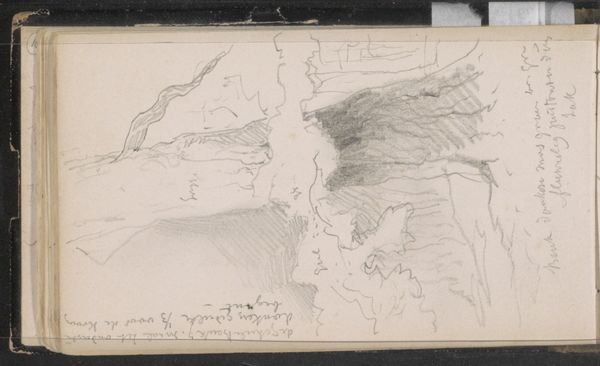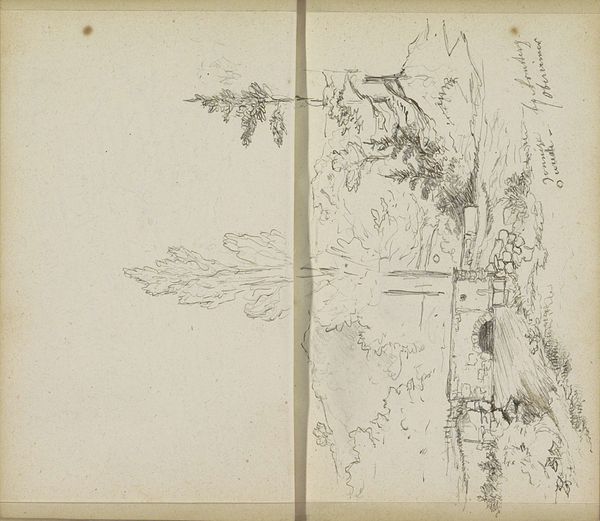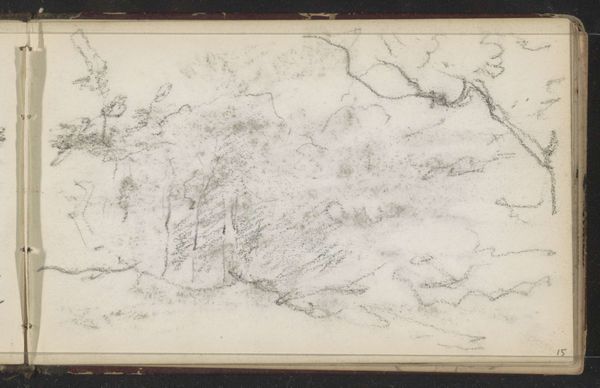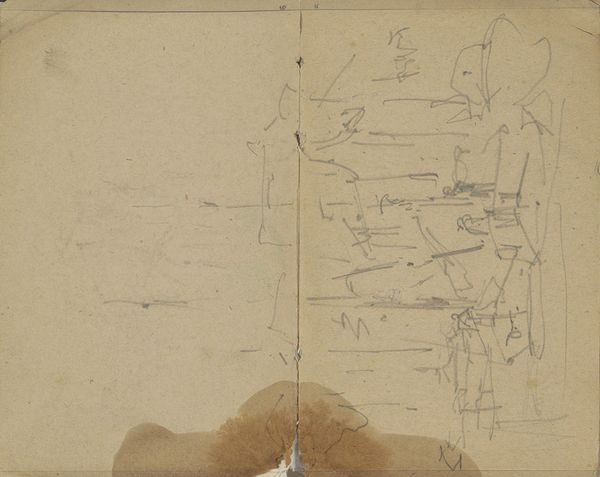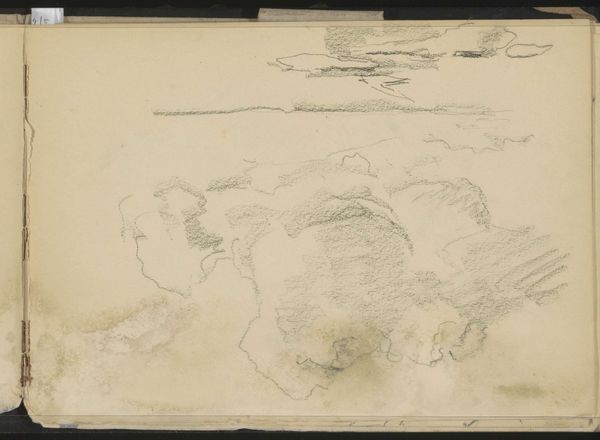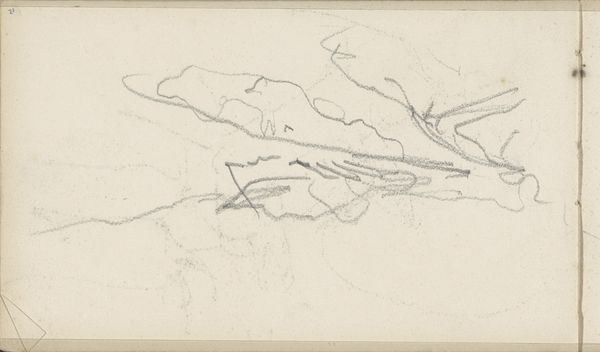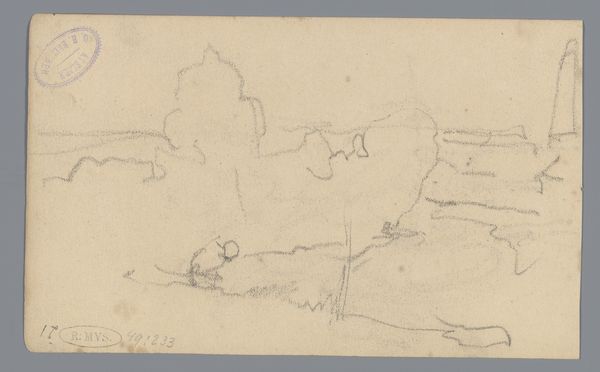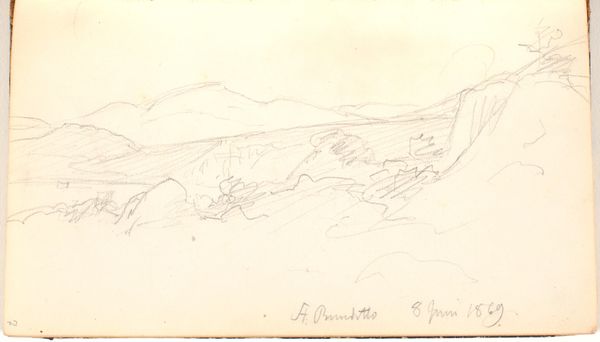
drawing, pencil
#
drawing
#
impressionism
#
sketch book
#
landscape
#
pencil
#
realism
Copyright: Rijks Museum: Open Domain
Curator: This is Johannes Tavenraat's 1873 drawing, "Haagse Bos," currently held in the collection of the Rijksmuseum. It's a pencil sketch across two pages of what appears to be a sketchbook. Editor: Immediately, I'm drawn to the economy of line here. It’s less about precise representation and more about capturing a fleeting impression, a feeling of the forest's atmosphere. The overall composition is very dynamic even though it is a black and white pencil sketch. Curator: Yes, precisely! Tavenraat utilizes a landscape style that speaks to Realism and also flirts with nascent Impressionistic tendencies. Notice the delicate hatching and the strategic use of blank space—a method of establishing form without relying on strict tonal values. This adds visual interest and an element of abstraction that departs from rigid naturalism. Editor: Speaking of form, the choice of pencil is fascinating. What inherent qualities and how might its limitations helped or hurt his intent? Pencil requires a certain deliberate pressure. What paper stock was employed, too? Did it offer the right level of receptiveness to the mark-making? Also, was it machine-made, and thus available on a mass scale? This choice signifies a break from more traditional media. Curator: Those considerations are fascinating! By using such rudimentary, commercially available materials—and not, say, oils—Tavenraat shifts our attention from a purely representational experience to an emphasis on pure visuality: of form, structure, and arrangement. The drawing foregrounds its own medium, inviting the viewer to appreciate its intrinsic qualities as an object and as a piece of work on paper, rather than to only see the forest it represents. Editor: True. And I can see how that might affect its reception within the traditional art world. Its casual, sketch-like quality makes me question whether it was conceived of as a piece of high art at all. Was it merely a preparatory sketch intended for something else? And does the fact that it has been preserved within a book provide a certain protection that an isolated leaf of paper wouldn't have benefited from? These decisions ultimately influenced its lifespan and context, too. Curator: Excellent point. The context reframes the image, providing meaning and impacting both our interpretation of it as well as our engagement with it. I believe we have illuminated a crucial aspect of the drawing. Editor: Indeed, a dialogue between form and material, the seen and the made!
Comments
No comments
Be the first to comment and join the conversation on the ultimate creative platform.
